To go Back at any time,
use Browser's "Previous Page"
With a population of only 300,000 people, this is one of the smallest capital cities in Europe. On a day-trip from our hotel in Bled, a city guide introduced us to Ljubljana’s old town. We then had a few hours on our own to explore its streets.
The most picturesque sights of the old town are along the banks of the Ljubljanica River, which curves lazily around a castle-topped hill. The photo below was taken from one of the many fine-looking bridges which span the river:
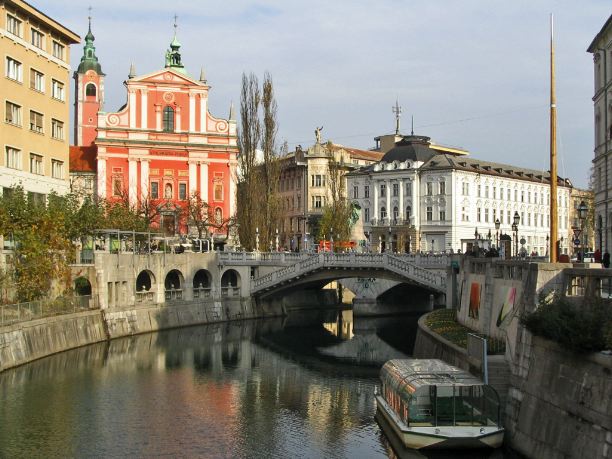
Directly ahead is the Triple Bridge, probably the most photographed landmark in Ljubljana. It consists of two pedestrian walkways straddling a central bridge for motor vehicles. Attractively decorated and illuminated, it is supposedly quite a sight at night. Left of the bridge is the 17th century Franciscan Church of the Annunciation.
Unlike that church, the interior of the nearby Cathedral of St. Nicholas is much easier to photograph than its exterior:
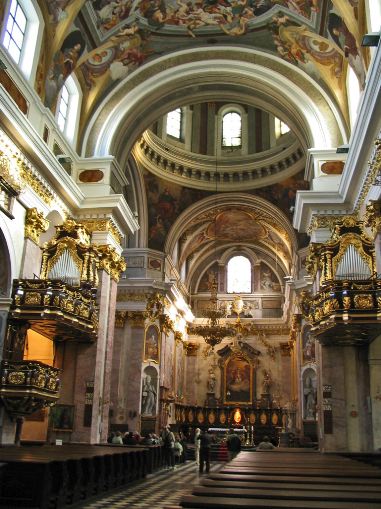
The Cathedral is best known for its colorful and impressive frescoes.
Just around the corner from the Cathedral, fresh produce of all kinds can be had at the city market:

After the Triple Bridge the next in sequence is the Dragon Bridge. Here tourists are prone to linger in hopes of being discovered by a passing photographer:
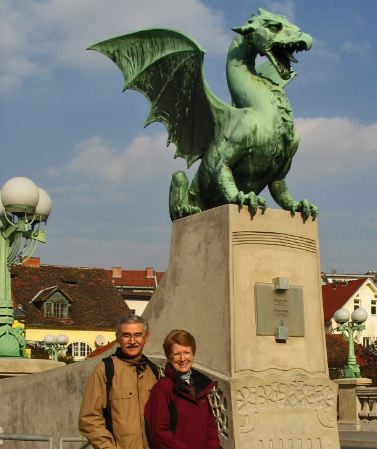
This is one of four such dragons located at each corner of the bridge. The dragon is the city’s symbol.
A quiet lane paralleling the river is perfect for sitting in an outdoor cafe:

With walkways on both sides, though, the river front is also a pleasant place to stroll:

This was about as far as we could walk and still make it back to the bus before departure. The castle’s clock tower, which is clearly visible from here, offers splendid views for those willing to climb:
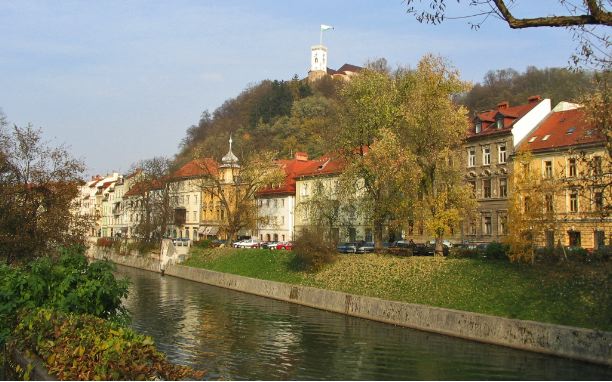
While waiting for our bus to leave, Patty enjoys the ambiance of Congress Square:
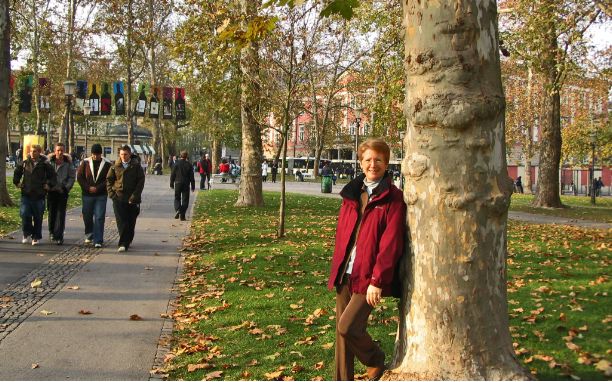
A lively student population buzzes through this park-like square because of nearby Ljubljana University, Slovenia’s major institution of higher learning.
In fact, the administrative offices are housed just across the street in this immense, Renaissance-style University Building completed in 1902:
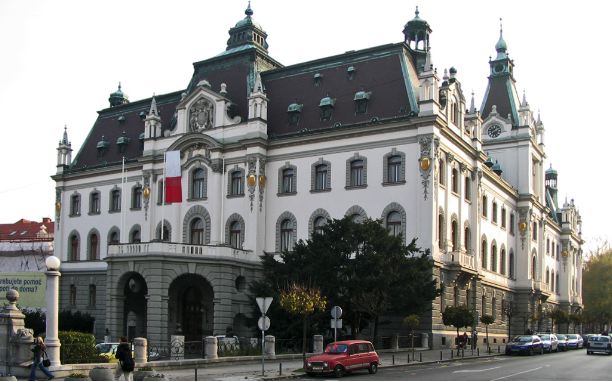
Eventually, it was time to bid adieu to this prosperous and sophisticated capital. Returning to our Bled hotel, we packed our bags in preparation for a move to Opatija on the Adriatic coastline of Croatia.
Early the next morning another teary farewell, this time to the lakeside staff, promising repeatedly to return soon:

We could tell they were truly heartbroken at our departure.
THE END